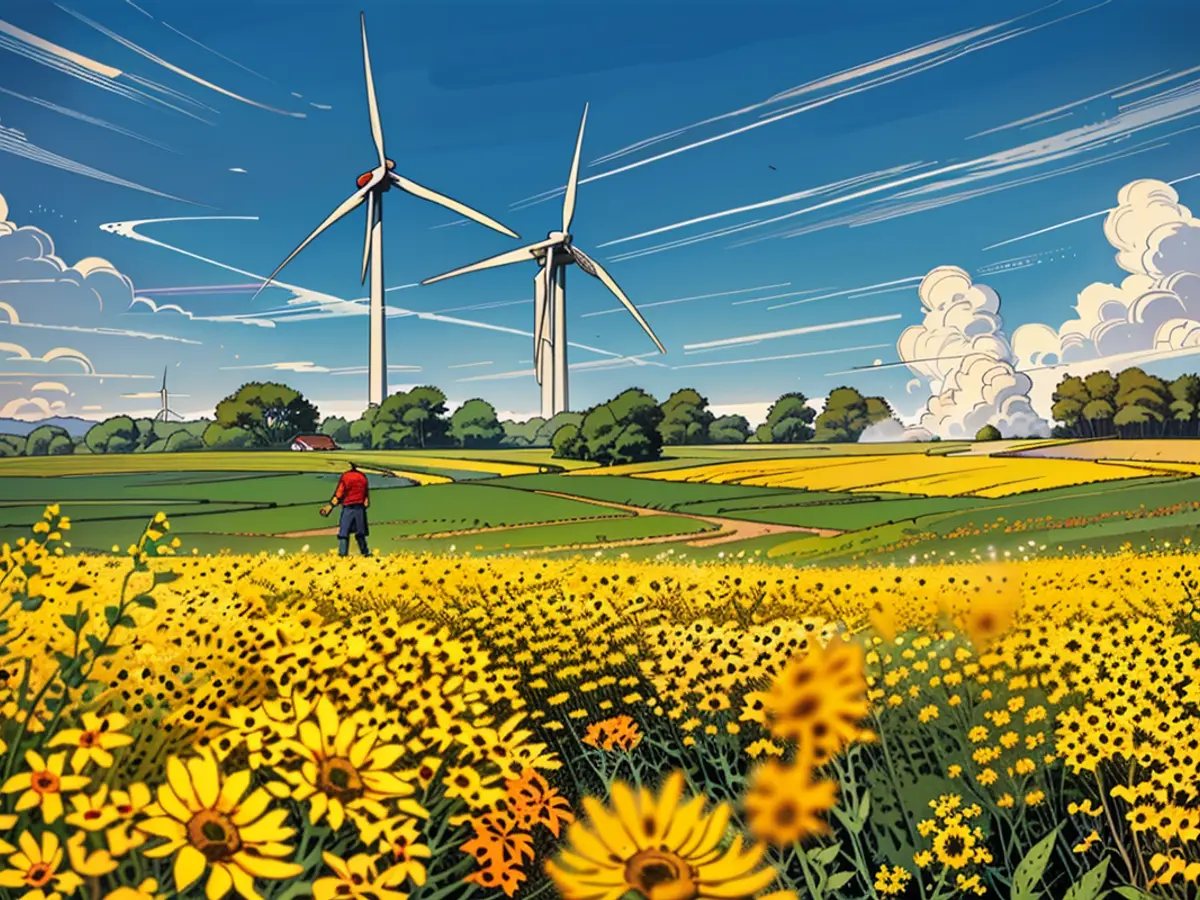Nature - Wind turbine distance remains a sticking point for the Black-Greens.
In line with the coalition pact between the CDU and the Greens, the state government has revised its stance on installing wind turbines. Instead of the previous two percent of the state's area, they will now allow them on a much larger three percent. However, important considerations remain regarding the installation. Interior Minister Sabine Sütterlin-Waack (CDU) and Environment Minister Tobias Goldschmidt (Greens) emphasized that priority areas will still have a 400-meter buffer zone from housing. The minimum distance from villages and cities remains at 800 meters for villages and 1000 meters for cities.
With these modifications, the target of 15 gigawatts of wind-powered capacity on three percent of the state's area is getting closer, remarked Goldschmidt, a positive development for the regional economy. Nature conservation will continue to be incorporated in the planning. Construction will not take place in key areas like primary bird migration routes and bird breeding sites, or in the Natura 2000 regions, protecting species and encouraging harmony between wind energy and the environment.
Sütterlin-Waack highlighted the significance of these changes, calling it a milestone towards a sustainable energy future in the north. Approximately 7.2 percent of the state's area is suitable for wind power, and the government is determined to utilize this potential. Municipalities can consider incorporating wind parks within this area by exercising the community opening clause introduced by the federal government. This clause gives them the freedom to plan wind facilities outside the designated state priority areas.
The government's new draft of the state development plan welcomes public opinion on these changes. Submissions can be sent in until June 25th, with a wider consultation process extending until September 9th. The state development plan will form the foundation for regional wind energy plans in the three regions, and the first regional plans are predicted to emerge by the end of 2024.
Thus, the state's shift towards wind energy continues with new guidelines and priorities, accommodating economic and environmental concerns.
Read also:
The CDU, in their coalition agreement, has influenced the state government's decision to increase the allowed area for wind turbines from 2% to 3%. Sabine Sütterlin-Waack, a CDU minister, and Tobias Goldschmidt from the Greens, have agreed on maintaining a buffer zone of 400 meters from housing in priority areas for wind turbine installation. The CDU-led state government, with the support of Sabine Sütterlin-Waack, is targeting 15 gigawatts of wind-powered capacity on 3% of Schleswig-Holstein's area, utilizing Sabine Sütterlin-Waack mentioned that approximately 7.2% of the state's area is suitable for wind power.








